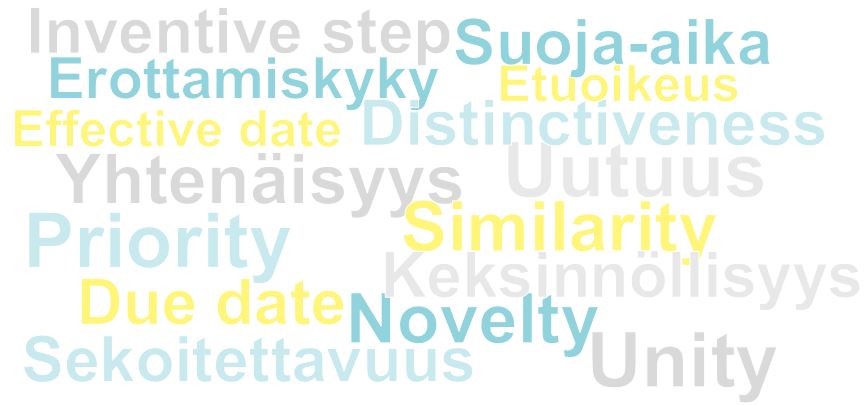IPR easily – Basic concepts for obtaining protection (part 1)

- Kaisa Suominen
- –

- Joose Kilpimaa
- –
- News
- –
- 23.1.2023

Oath, TM, priority, power of attorney… Do you feel dizzy when reading about intellectual property rights (IPR)? Don’t worry – in our new series “IPR made easy” we’ll explain the most common terminology used in the filed of IPR – in a way that is comprehensive for everybody. The first part covers the basic terminology.
Part 1: Basic concepts for obtaining protection
Distinctiveness
Distinctiveness of a trademark means the ability of the mark to distinguish it from trademarks of others. In order to be distinctive, the trademark must not describe the goods and services it is applied for, and that the trademark is not a generic term for these goods and services. Distinctiveness is an absolute requirement for registration of trademark. Therefore applications for non-distinctive or descriptive trademarks will rejected by the trademark office.
Industrial applicability
A patentable invention must be industrially applicable. Industry is however a term understood very broadly, as i.a. agriculture is considered to be an industry in the patent world. In practice, almost all use is industrial, with the exception of specific exclusions, such as methods of treatment, presentation of information or processes for cloning human beings. Some of these are in fact excluded from patentability in the patent laws for some other reason than lack of industrial applicability.
Inventive step
The requirement of inventive step means that the invention to be protected is sufficiently different from known inventions. The conditions for recognising the presence of inventive step differ slightly from one country and system to another, and it is typically the most discussed subject in the communications with the patent office during prosecution. Typically, an invention is considered to be inventive, if it is a combination of two known inventions, and it would not have been obvious to make such a combination. More about inventive step in our article here.
Novelty
The requirement of novelty is absolute, that is, the invention or design to be protected must not have been made available to the public in any form and in any manner. Novelty can also be described as a photo, i.e. a method or product is novel, if exactly the same is not previously known. (A small exception in some cases is the grace period, see our article here).
Similarity
A trademark may not be confusingly similar to an earlier registered trademark covering the same or similar goods and services. Trademarks are considered as confusingly similar if the marks are the same or similar. Similarity between trademarks is examined through visual, phonetic and conceptual similarity. If the trademarks are considered as similar, there is a risk of confusion among the relevant target group, which leads to the rejection of the application of the latter mark or to the prohibition of use of the latter mark.
Unity
Patent and utility model applications need to be unitary, i.e. the claims must define only one invention. A new patent application must fulfil the requirement of unity when filed, but the claims must be unitary also during prosecution of the application. It is thus possible that an application that was unitary when filed becomes non-unitary during prosecution. Sometimes it is thus necessary to file a divisional application on the second (or further) invention. More about divisional applications here.
Abbreviations in the field of IPR here.


